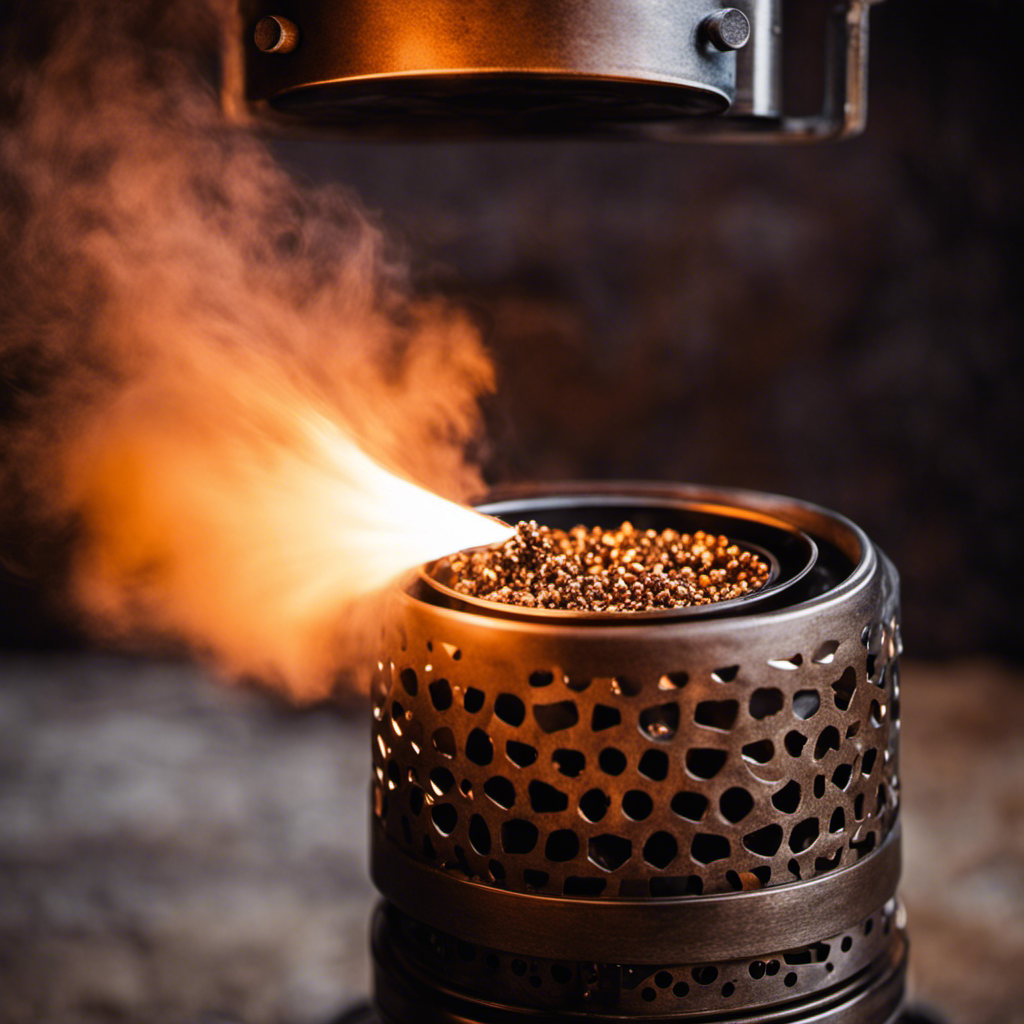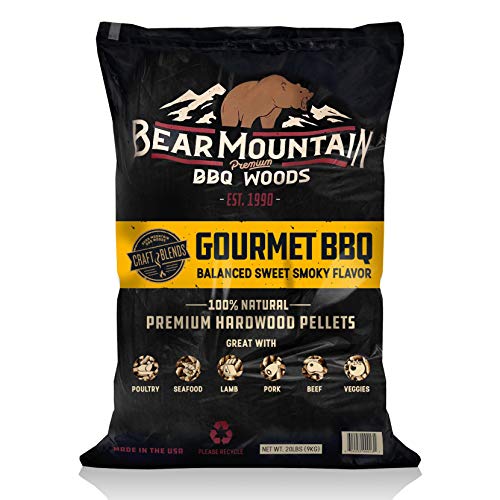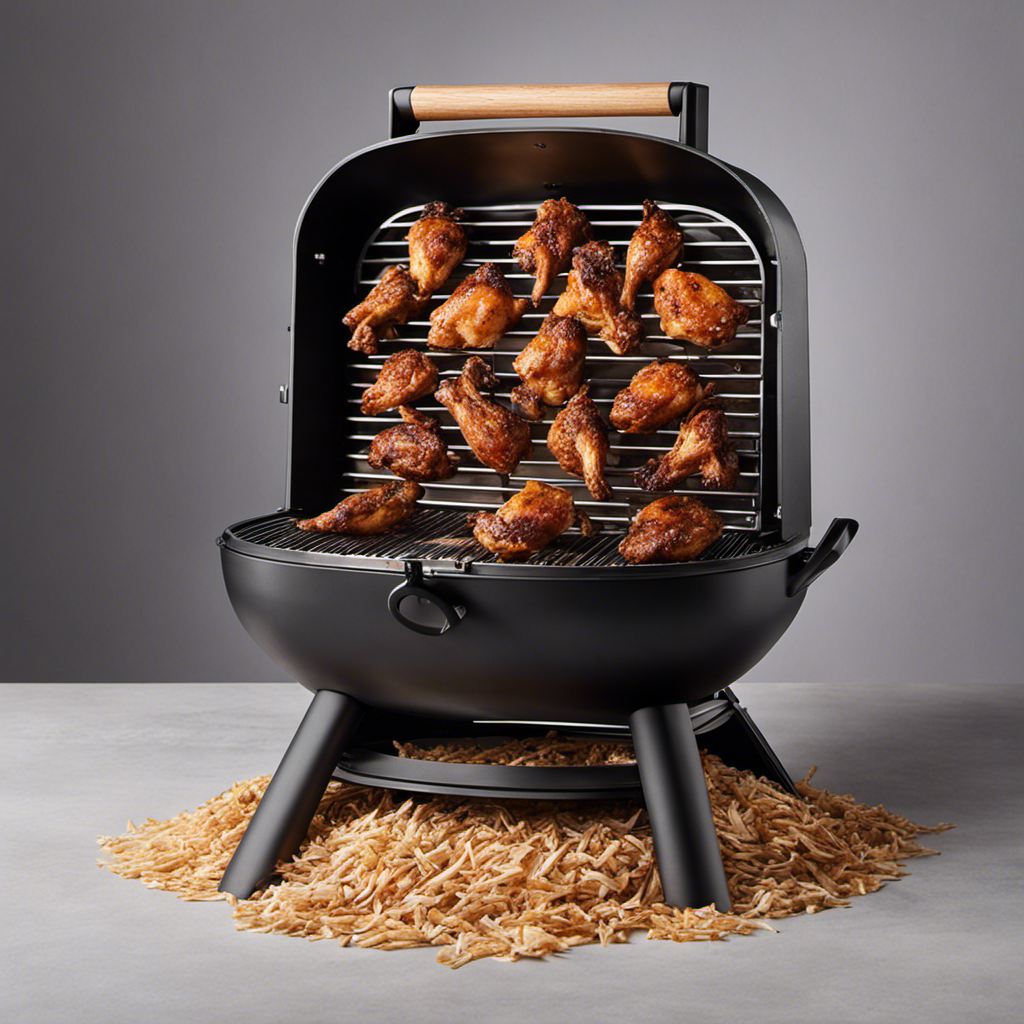Curious to learn about the workings of pellet stove igniters? Worry not, because we have all the information you need right here!
In this article, we’ll unravel the secrets of pellet stove igniters, explaining how they work and the different types available.
We’ll also dive into signs of a faulty igniter and offer tips for replacement and maintenance.
So, like a locksmith with a set of master keys, we’re here to unlock the mysteries of pellet stove igniters together!
Key Takeaways
- Pellet stoves use either a glow bar igniter or an automatic ignition system to ignite the pellets in the combustion chamber.
- A cracked or non-functioning igniter indicates that it needs to be replaced.
- The lifespan of a pellet stove igniter is typically 3-5 years, but can vary depending on usage and pellet quality.
- Replacing a pellet stove igniter can cost between $130 to $190 and requires basic knowledge of the stove’s operation.
The Inner Workings of Pellet Stove Igniters
After researching, we’ve discovered that most pellet stoves utilize a glow bar igniter that heats up a rod using electricity to ignite the pellets as they enter the combustion chamber. This type of igniter has its pros and cons.
One advantage is that it provides a quick and efficient ignition process. However, a disadvantage is that it can wear out over time and may need to be replaced.
Troubleshooting common igniter problems involves checking for cracks or damage, as well as ensuring that it’s glowing properly. If the igniter fails to ignite the pellets, it may indicate a faulty igniter that needs to be replaced.
It’s important to regularly inspect and maintain the igniter to ensure optimal performance of the pellet stove.
Signs of a Faulty Pellet Stove Igniter
We can identify a faulty igniter by observing if it’s cracked or not glowing when attempting to start a fire. Troubleshooting igniter problems is crucial for maintaining the functionality of a pellet stove.
Igniters play a vital role in igniting the pellets and ensuring efficient combustion. Regular maintenance of the igniter offers several benefits.
Firstly, it prolongs the lifespan of the igniter, ensuring it lasts for the recommended 3-5 years. Secondly, it improves the overall performance and heat production of the stove. By keeping the igniter clean and free from ash and soot, optimal heat transfer is achieved.
Additionally, regular maintenance allows for early detection of any issues with the igniter, preventing potential breakdowns and costly repairs. Taking the time to properly care for and maintain the igniter will ensure the ongoing functionality and longevity of the pellet stove.
Understanding the Lifespan of Pellet Stove Igniters
When it comes to the lifespan of igniters, it’s important to understand that factors like frequency of usage and the quality of pellets burned can impact their durability.
Common causes of igniter failure include cracked or broken igniters, as well as non-glowing or non-fire-starting igniters. If you suspect a bad igniter, seeking professional help for accurate testing and advice is recommended.
Troubleshooting tips for igniter issues include cleaning the igniter by brushing away ash and soot, and using a damp cloth to remove stuck pieces of soot. Some models may require removing the entire igniter assembly for cleaning. It’s crucial to regularly clean the igniter for optimal stove performance.
Keep in mind that the lifespan of pellet stove igniters can vary, with standard igniters lasting 3-5 years.
The Cost of Replacing a Pellet Stove Igniter
Replacing a faulty igniter in our pellet stove can cost anywhere between $130 to $190.
When considering the cost versus lifespan of pellet stove igniters, it’s important to understand common igniter problems and how to troubleshoot them. Cracked or broken igniters need to be replaced, as they’ll not function properly. If the igniter isn’t glowing or not starting a fire, it’s likely a sign of a bad igniter. Seeking professional help can provide accurate testing and advice for replacement.
The lifespan of pellet stove igniters can vary, with standard igniters lasting 3-5 years. Factors such as frequency of stove usage and the quality of pellets burned can impact igniter lifespan. Regular cleaning of the igniter is also crucial for optimal stove performance.
Overall, understanding the cost and lifespan of pellet stove igniters is essential for maintaining a properly functioning pellet stove.
Step-by-Step Guide to DIY Igniter Replacement
After turning off the power and disconnecting the gas line, our first step in replacing the igniter is to carefully remove the old igniter from the pellet stove.
To troubleshoot a pellet stove igniter, it’s important to check for cracks or signs of damage. If the igniter fails to glow or ignite the pellets, it’s likely a faulty igniter.
While DIY replacement is possible, seeking professional help ensures accurate testing and advice. The benefits of professional igniter replacement include expertise in identifying the issue and ensuring proper installation.
It’s crucial to understand the lifespan of pellet stove igniters, which typically last 3-5 years. Factors such as frequency of stove usage and pellet quality can affect their durability.
Regular cleaning of the igniter is also essential for optimal stove performance.
When to Call a Professional for Igniter Replacement
If we’re unsure about our ability to safely replace the igniter ourselves, it’s best to call a professional for assistance. Troubleshooting igniter problems can be challenging, and a professional technician has the expertise to diagnose and fix the issue accurately.
Here are the benefits of professional igniter replacement:
-
Experience and knowledge: Professionals have extensive experience working with pellet stoves and igniters. They can quickly identify the problem and provide appropriate solutions.
-
Safety: Handling electrical components and gas lines requires caution and expertise. Professionals ensure that the replacement is done safely, minimizing the risk of accidents.
-
Warranty and quality: Professional igniter replacement often comes with a warranty, ensuring that you receive a high-quality igniter that will last for years.
-
Time-saving: Hiring a professional saves you time and effort, as they can efficiently replace the igniter, allowing you to enjoy a properly functioning pellet stove sooner.
Calling a professional for igniter replacement ensures a smooth and reliable solution to your pellet stove problems.
Essential Tips for Cleaning a Pellet Stove Igniter
Regular cleaning of the igniter is crucial for maintaining optimal heat production and stove functionality. To ensure the igniter operates efficiently, it’s recommended to clean it at least once a month or more frequently if you notice any issues with ignition. Cleaning frequency may vary depending on the stove model and usage, so it’s important to consult the manufacturer’s guidelines.
When cleaning the igniter, troubleshooting techniques can be employed to identify and resolve any problems. This may involve inspecting the igniter for any signs of damage, such as cracks or broken parts, and replacing it if necessary. Additionally, using a brush to remove ash and soot from the igniter can help improve its performance.
Proper Maintenance for Prolonging Igniter Lifespan
To maximize the lifespan of our igniters, we should ensure proper maintenance is performed regularly. Igniters are crucial for the efficient operation of pellet stoves, but they can experience common problems that require troubleshooting techniques.
Here are some common igniter problems and troubleshooting techniques:
-
Igniter not glowing: Check if the igniter is receiving power and if the electrical connections are secure. Replace the igniter if necessary.
-
Igniter not igniting pellets: Ensure that the fuel supply is sufficient and that the combustion chamber is clean. Clean or replace the igniter if it’s dirty or damaged.
-
Igniter producing weak sparks: Clean the igniter electrode and adjust its position if necessary. Replace the igniter if the problem persists.
Regularly inspecting and cleaning the igniter, along with following these troubleshooting techniques, will help prolong its lifespan and ensure optimal performance of the pellet stove.
Different Types of Pellet Stove Igniters and Their Pros/Cons
When it comes to pellet stove igniters, there are different types available, each with their own pros and cons. One important aspect to consider is the material used in the igniter, as it can greatly impact its performance and durability.
To highlight the differences, here is a table comparing two common types of pellet stove igniters:
| Igniter Type | Material Used | Pros | Cons |
|---|---|---|---|
| Glow Bar | Ceramic | – Fast and efficient ignition – Long lifespan – Resistant to high temperatures |
– Can be more expensive – Fragile and prone to cracking |
| Automatic | Nickel | – Durable and robust – Lower cost – Can handle different pellet qualities |
– Slower ignition process – Requires more maintenance – Less heat resistant |
Choosing the right igniter for your pellet stove depends on your specific needs and preferences. While glow bar igniters offer quick ignition and durability, automatic igniters are a cost-effective option that can handle varying pellet qualities. Consider the materials used and the performance characteristics to find the igniter that best suits your requirements.
Troubleshooting Common Igniter Issues
One common issue we may encounter is a glowing igniter that fails to ignite the pellets. When troubleshooting this problem, there are a few common causes of igniter failure to consider:
-
Insufficient power supply: Check if the igniter is receiving the proper voltage. A weak or unstable power source can prevent the igniter from reaching the necessary temperature to ignite the pellets.
-
Build-up of ash or debris: Over time, ash and debris can accumulate on the igniter, preventing it from heating up properly. Regular cleaning of the igniter is essential to ensure its optimal performance.
-
Faulty temperature sensor: The temperature sensor is responsible for regulating the temperature of the igniter. If the sensor is malfunctioning, it may not signal the igniter to heat up, resulting in failure to ignite the pellets.
Maximizing Efficiency With a Well-Maintained Igniter
To maximize efficiency with a well-maintained igniter, it is important to follow proper igniter maintenance tips and troubleshoot any igniter problems that may arise. Regular cleaning of the igniter is crucial for optimal stove performance. This can be done by opening the firebox door and brushing away ash and soot from the igniter. Using a damp cloth to wipe away stuck pieces of soot is recommended. Some models may require removing the entire igniter assembly for thorough cleaning. By ensuring the igniter is clean and free from debris, you can enhance heat production and improve stove functionality. Additionally, troubleshooting igniter problems promptly is essential. If the igniter is cracked, broken, or not glowing, it may need to be replaced. Seeking professional help can provide accurate testing and advice for replacement. By following these maintenance tips and addressing any issues, you can maximize the efficiency of your pellet stove igniter.
| Igniter Maintenance Tips | Troubleshooting Igniter Problems |
|---|---|
| Regularly clean the igniter | Cracked or broken igniter |
| Remove ash and soot buildup | Non-glowing or non-fire-starting igniter |
| Wipe away stuck pieces of soot | Seek professional help for accurate testing |
| Remove and clean the entire igniter assembly (if required) | Replace the igniter if necessary |
| Ensure optimal heat production and stove functionality | Address issues promptly for efficient operation |
Can Multi-Fuel Stoves Use the Same Igniters as Pellet Stoves?
Yes, multifuel stoves power can typically use the same igniters as pellet stoves. These stoves utilize various fuels like wood, coal, and pellets, making them versatile heating options. With comparable ignition systems, users can conveniently ignite their multifuel stoves by relying on the same igniters found in pellet stoves.
What is the Difference Between Pellet Stove Igniters and Multi-Fuel Stoves in Terms of Heating Efficiency?
When it comes to the power of stoves, pellet stove igniters and multi-fuel stoves differ in their heating efficiency. Pellet stove igniters are more efficient in heating as they use compressed wood pellets, while multi-fuel stoves can burn various types of fuel but may not be as energy-efficient.
Frequently Asked Questions
Can I Use Any Type of Igniter in My Pellet Stove, or Do I Need to Use a Specific Type?
Yes, different types of igniters are available for pellet stoves, and it’s important to use the specific type recommended by the manufacturer. Each type of igniter has its own advantages and is designed to work optimally with the stove’s combustion system.
Using the wrong type of igniter can lead to inefficient ignition or potential damage to the stove. It’s always best to consult the stove’s manual or seek professional advice to ensure the correct type of igniter is used.
Is It Normal for the Igniter to Produce a Small Flame When Igniting the Pellets?
Yes, it’s normal for the igniter to produce a small flame when igniting the pellets. The igniter is designed to create a controlled flame that quickly ignites the pellets in the combustion chamber. This flame is necessary to start the combustion process and generate heat.
However, if the flame is too large or irregular, it may indicate a problem with the igniter or the fuel feed system. Regular igniter maintenance and troubleshooting common igniter issues can help ensure proper functioning of the pellet stove.
How Often Should I Clean My Pellet Stove Igniter?
Cleaning frequency of a pellet stove igniter depends on several factors. It’s generally recommended to clean the igniter every 2-3 weeks, or when you notice a buildup of ash or soot. Regular cleaning ensures optimal heat production and prevents common issues like poor ignition or igniter failure.
To clean the igniter, open the firebox door and brush away any ash or soot. Use a damp cloth to wipe away any stuck pieces. Some models may require removing the entire igniter assembly for thorough cleaning.
Are There Any Safety Precautions I Need to Take When Replacing a Pellet Stove Igniter?
When replacing a pellet stove igniter, there are important safety precautions to keep in mind.
First, ensure the power is turned off and the gas line is disconnected. This will prevent any accidental sparks or gas leaks.
When installing the new igniter, follow proper techniques such as securely reconnecting the gas line and turning on the power.
It’s crucial to handle electrical and gas components with caution, so if you’re unsure, it’s best to call a qualified technician for assistance.
Can I Use a Pellet Stove Without an Igniter, or Is It Necessary for Proper Functioning?
Using a pellet stove without an igniter isn’t recommended as it’s necessary for proper functioning. The igniter is responsible for igniting the pellets, allowing the stove to generate heat.
While it’s possible to manually ignite the pellets, it can be time-consuming and may not produce consistent results.
The benefits of using a specific type of igniter, such as a glow bar igniter, include reliable ignition and efficient pellet combustion.
Conclusion
In conclusion, understanding the workings of pellet stove igniters is crucial for optimal performance and longevity.
Did you know that on average, a well-maintained pellet stove igniter can last for 3-5 years? This statistic highlights the importance of proper maintenance and regular cleaning to maximize efficiency.
By recognizing the signs of a faulty igniter and knowing when to seek professional help, you can ensure a warm and cozy home throughout the colder months.
So, take care of your igniter and unlock the secrets to a reliable pellet stove.
Logan’s affair with adventure began in childhood. He hailed from a small town where vast forests bordered one side and endless shores stretched on the other. His days were spent exploring uncharted woods, climbing tall trees, or listening to the tales of old sailors. This early immersion in a world brimming with stories and mysteries became the foundation of his passion for writing.











